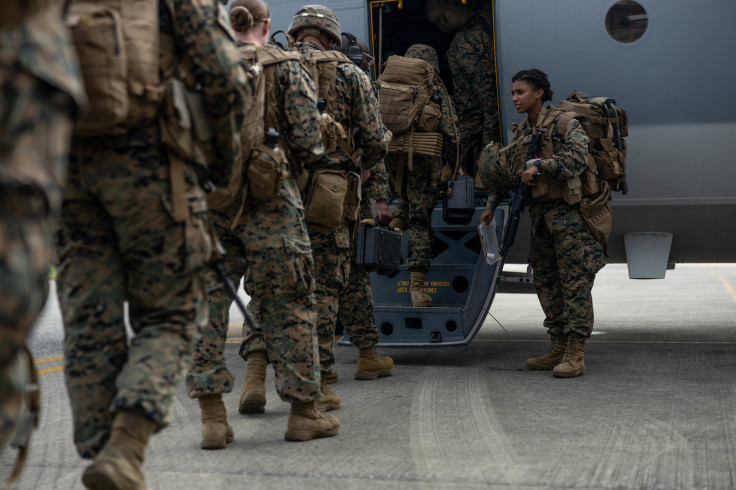Amid China Tensions, US Conducts Concurrent Bilateral Military Drills With Philippines, Japan
KEY POINTS
- The U.S. Marine Corps is participating in two concurrently held bilateral combat drills in Japan and the Philippines
- To counter Chinese aggressiveness, Washington is seeking to bolster security arrangements in the region through its alliances and partnerships
- Japan and the Philippines are key allies of the U.S. in the region
Amid tensions in the South China Sea with China and Beijing's growing aggressiveness toward Taiwan, the U.S. Marines are carrying out two concurrent large-scale bilateral exercises with key allies across the first island chain, from northern Japan through the Philippines.
According to a news release, more than 5,500 personnel of the U.S. Marine Corps are participating in Resolute Dragon 22 in Hokkaido, Japan and in KAMANDAG 6 across Luzon, Batanes and Palawan in the Philippines to be held between Oct. 1 and 14.
"Resolute Dragon and KAMANDAG are important opportunities to bolster the defensive capabilities of our alliances with Japan and the Philippines through realistic combined training," said Maj. Gen. Jay Bargeron, 3d Marine Division Commanding General.
"These exercises will allow our forces to strengthen interoperability and readiness to ensure we are prepared to rapidly respond to crises throughout the Indo-Pacific," he said in the release.
The KAMANDAG, the Tagalog acronym for "Cooperation of the Warriors of the Sea" combat drills, which start Monday and end on Oct. 14 will involve 1,900 US Marines and more than 600 Philippine counterparts who will participate in mock amphibious assaults and special operations. According to the defense release, the drill will also see America's HIMARS missile launchers and supersonic fighter jets, which will be part of the live-fire maneuvers.
In Japan, 1,400 Japan Ground Self-Defense Force (JGSDF) members from the 2nd Division, Northern Army and 1,600 U.S. Marines from across III Marine Expeditionary Force will conduct Resolute Dragon 22, the second annual iteration of the exercise which started Saturday and will end on Oct. 14.
The news release said KAMANDAG 6 and Resolute Dragon 22 are important components to maintaining the readiness and defensive capabilities of the U.S.-Philippines alliance and the U.S.-Japan alliance and aimed at strengthening international partnerships, mutual security and the ability to rapidly respond to crises throughout the Indo-Pacific.
The Philippines, which lies in close geographical proximity to China, across the South China Sea, is a key U.S. ally in the region. The country's bases will be crucial in any U.S. operation that seeks to counter China's anti-access/area denial military doctrine and rush aid to Taiwan in the eventuality of a military attack.
In a recent interview, Japan's Ambassador to the U.S., Jose Manuel Romualdez said that U.S. forces may be given access to the Philippines' military bases provided "it is important" for the country's "own security."
Meanwhile, in an effort to bolster a mutual security pact, the U.S. has been pushing for a trilateral alliance with Japan and Australia. Drawing up the premise for the trilateral arrangement, Secretary of Defense Lloyd Austin said the three countries were "deeply concerned by China's increasingly aggressive and bullying behavior in the Taiwan Strait and elsewhere in the region."
Both the Philippines and Japan have long-running territorial disputes with China over islands in the South China Sea, and are heavily dependent on the U.S. for their security.

© Copyright IBTimes 2024. All rights reserved.





















